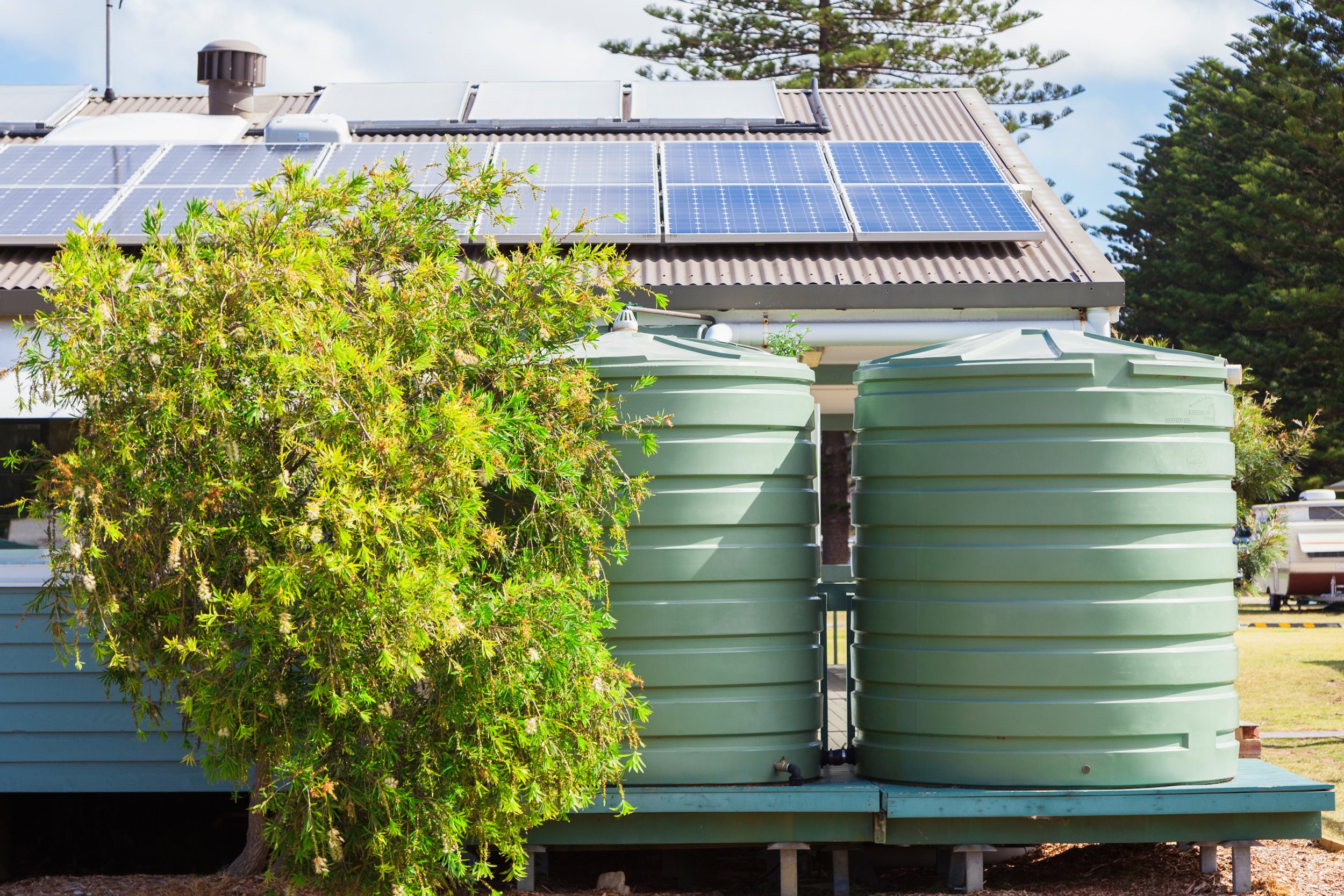
RAINWATER HARVESTING
Rainwater Harvesting in Southern California?
It rains in Southern California, even in a drought (In fact, sometimes more intensely!) Rainwater harvesting helps reduce flooding, localizes our water sources & makes us more water resilient.
How it works
Example Rain Tank construction detail
Example Rain Tank
When rainwater supply is low, a connection to an existing water suply can fill the tank. An air-gap is used to keep rainwater from accidentally getting into the existing water supply.
Rainwater is collected on hard surfaces such as roofs. Screens on gutters help keep leaves & other debris out of the tank.
Overflow can be directed to rain gardens, where the water can infiltrate & refill aquifers.
Gravity pulls water down through the gutters into the storage rain tank.
How does Rainwater Harvesting work with the natural systems around us?
When it rains, water slides down the roof. Gutters & special pipes pick water up.
The first few minutes of rain rinses the roof. This water goes into a “first flush” system that helps the rainwater tank stay clean.
Water comes out to nourish the trees, soil, birds & other life in the local ecosystem.
Water evaporates into the air, becoming future rain to be utilized in another rain tank -- or maybe yours!
How much benefit can rainwater harvesting provide Southern California homes?
Using this formula, you can calculate the amount of water savings possible through rainwater harvesting. A typical Ventura home could harvest enough rainwater to irrigate up to 40 citrus trees!
DO:
DO ensure your tank is sited at highest point on the property that it can fill from roof drainage.
DO allow for overflow to a rain garden: When the tank is full, water will find a way out.
DO be creative with tank sizes & shapes: Tanks are made in multiple shapes and sizes to help create fences, walls, or to fit even under decks.
DO install tank(s) on a compacted & level footing: Tanks with height-to-width ratios greater than 2-1 must be mounted to a structure.
DO put multiple tanks together: Tanks may be plumbed together to fit on a site where one larger tank would not.
DO identify you water needs: How much water do you need? Harvested rainwater can be used for irrigation, car washing, livestock watering, toilet flushing, laundry & fire suppression.
DO locate tanks close to the rainwater source and destination: Identify a location close to the source (downspouts) & close to the irrigation destination (plants). Ensure a setback of 3 feet from any buildings & not blocking windows.
DON’T:
DO NOT use fine sand for a base of tank. It will wash away & make the tank unstable.
DO NOT attempt to install yourself if you cannot. Call a local professional to evaluate & install.
Multiple Benefits
FIRE RESILIENCE
FOOD SECURITY
GROUNDWATER RECHARGE
EXTREME HEAT REDUCTION
HEALTHY COMMUNITIES
Related Tools
Climate Appropriate Plantings
Rain Gardens
Mulching
Greywater - Laundry to Landscape
Pollinator Corridors
Greywater - Sink/Shower




















